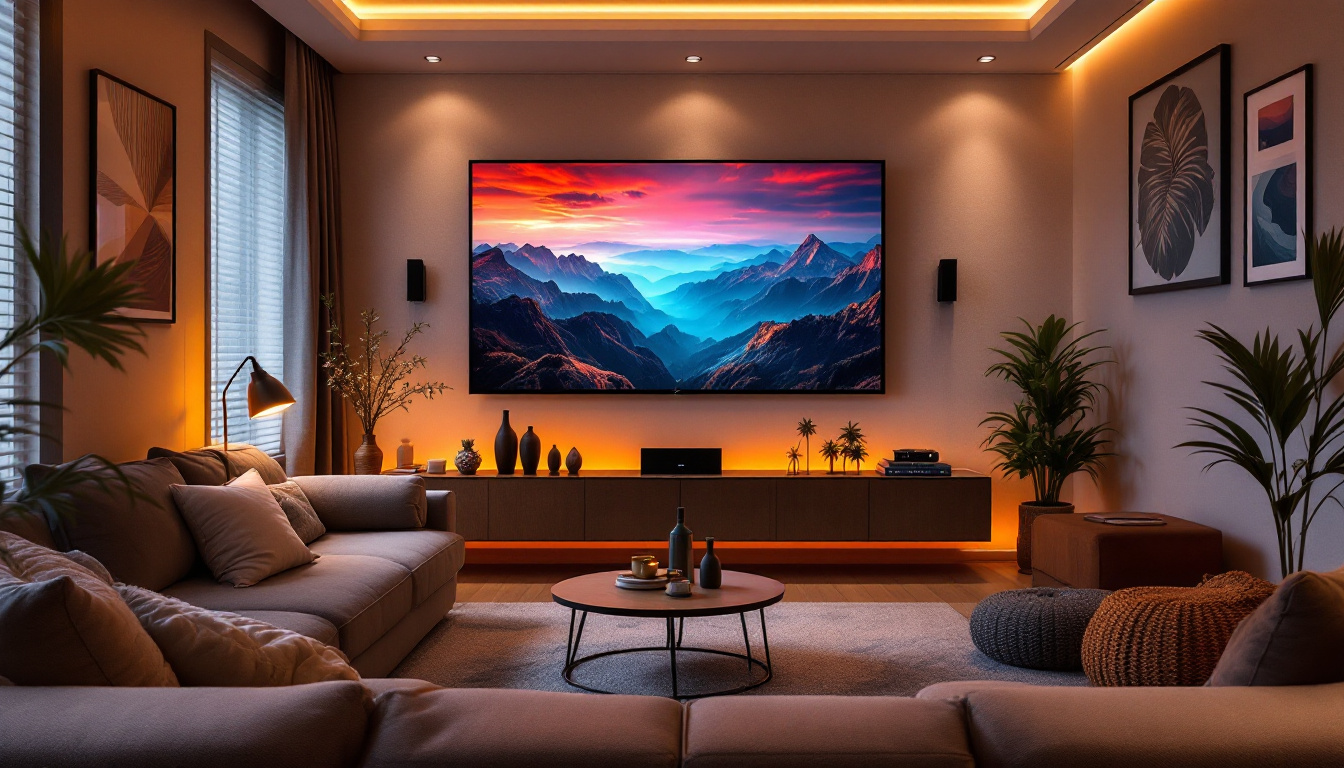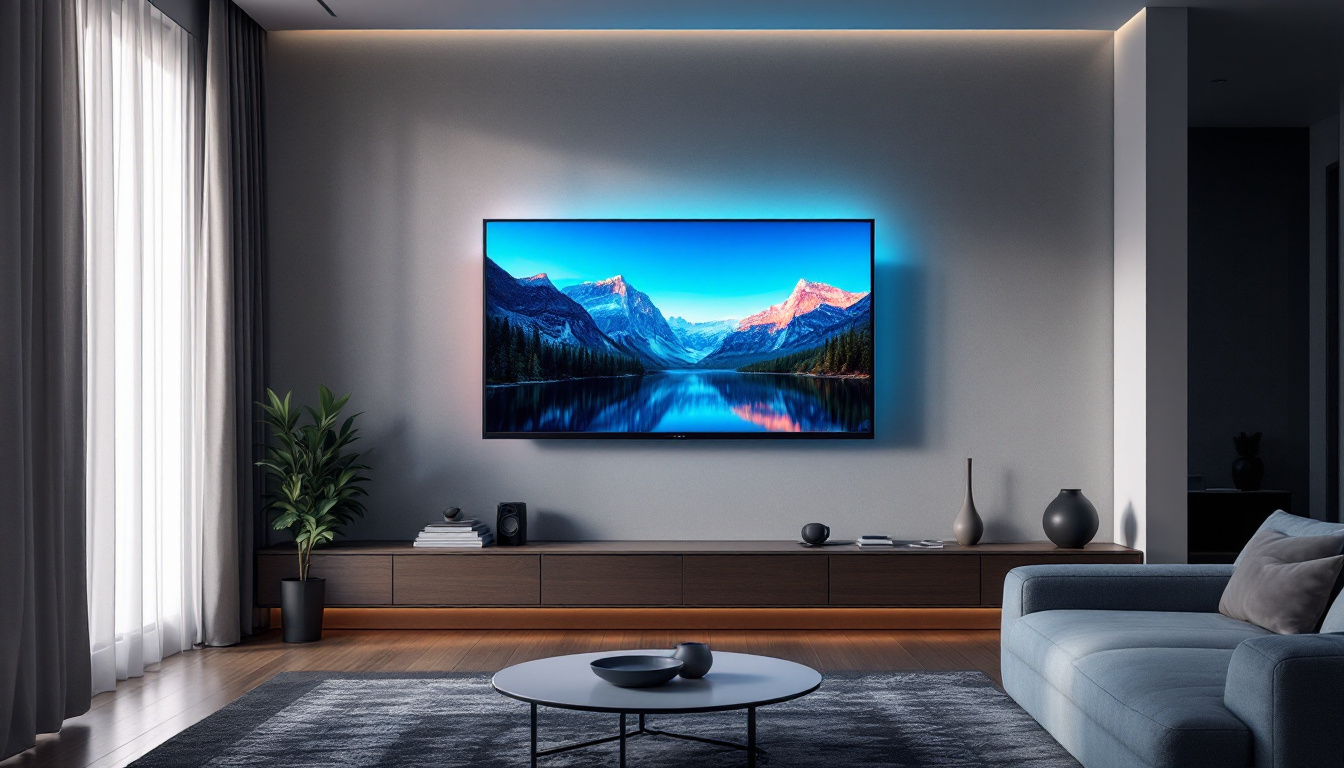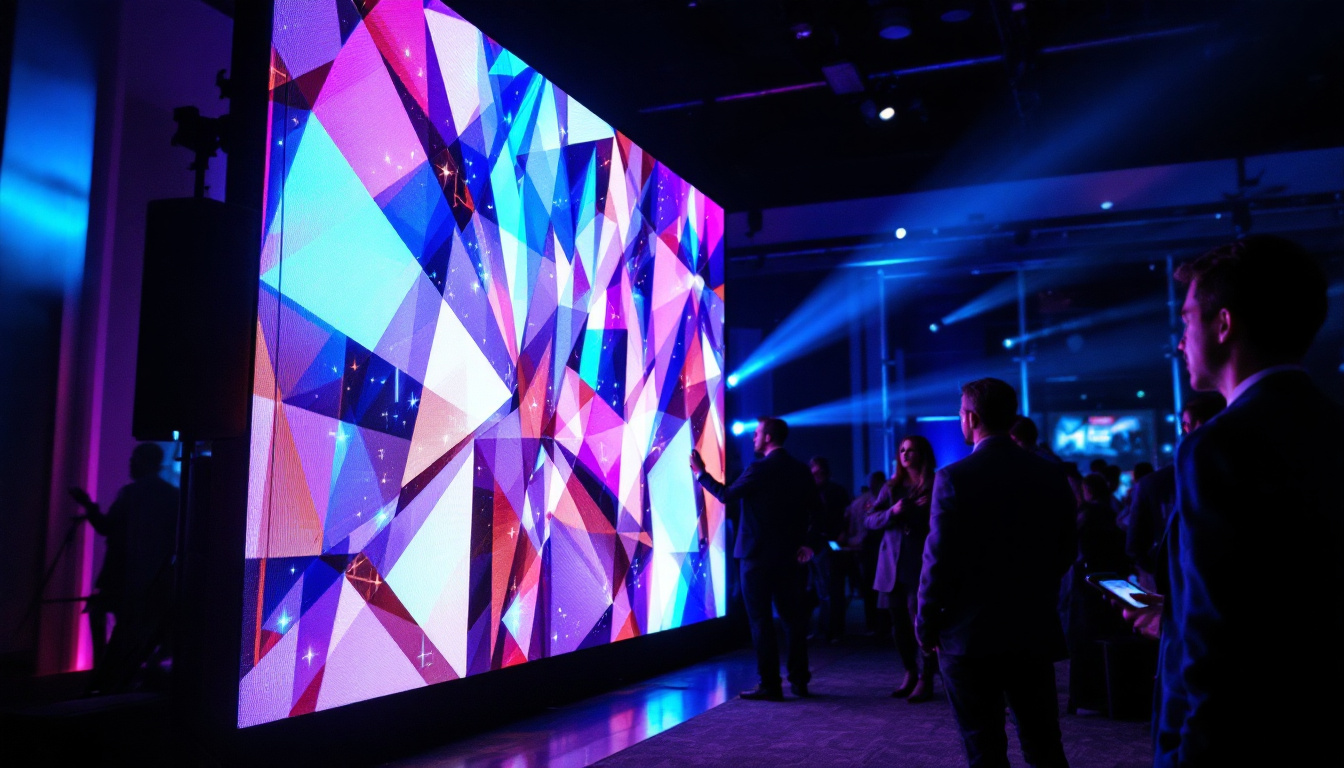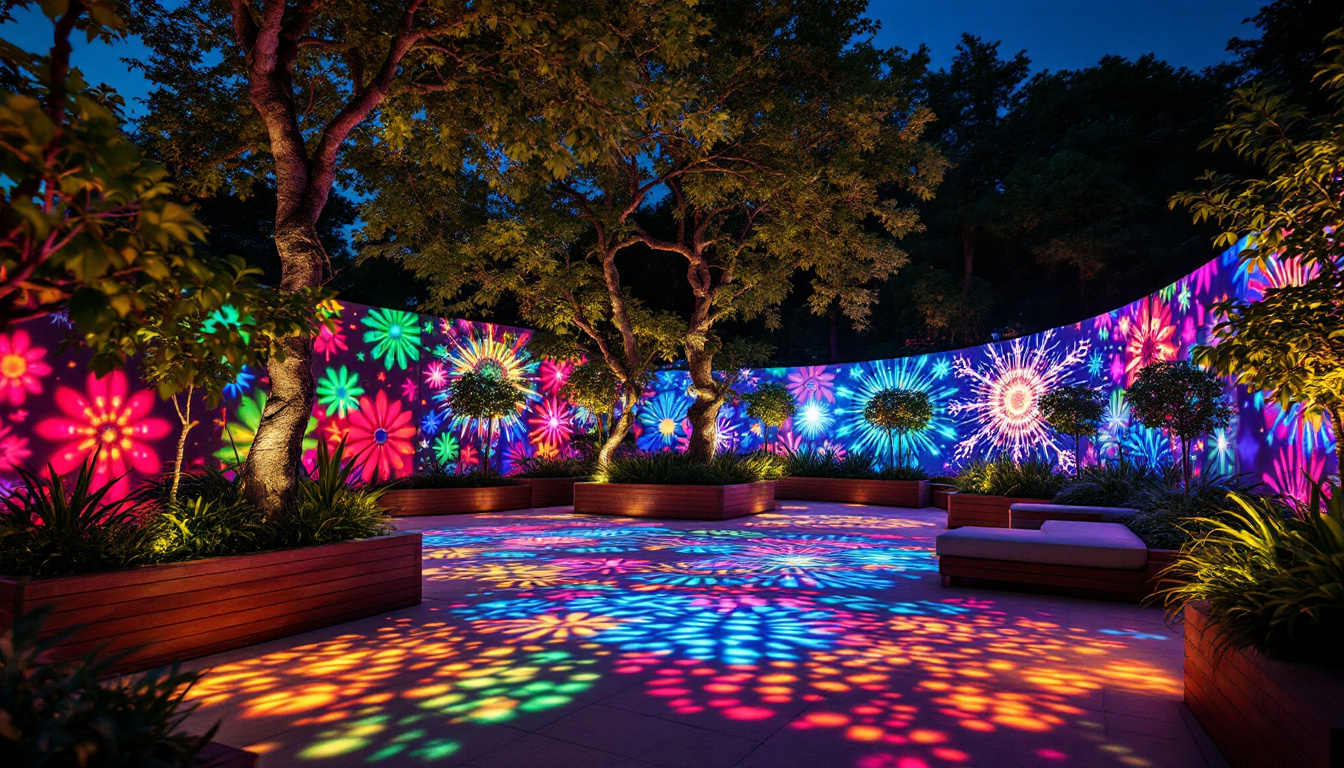In the realm of modern display technology, LCD wall panels and LED displays have emerged as two of the most popular options for both commercial and residential applications. Understanding the differences, advantages, and applications of each can help consumers and businesses make informed decisions. This article delves into the intricacies of LCD wall panels and LED displays, exploring their functionalities, benefits, and ideal use cases.
Understanding LCD Wall Panels
Liquid Crystal Display (LCD) wall panels are flat-panel displays that utilize liquid crystals to produce images. These displays are widely recognized for their clarity, color accuracy, and versatility. They are commonly used in a variety of settings, from home entertainment systems to large-scale digital signage.
How LCD Technology Works
At the heart of an LCD panel is a layer of liquid crystals sandwiched between two sheets of polarized glass. When an electric current is applied, the crystals align in such a way that they either block or allow light to pass through. This process creates the images that are displayed on the screen.
Typically, LCD panels use a backlight, often made up of fluorescent lamps or LEDs, to illuminate the image. The backlight shines through the liquid crystals, which modulate the light to produce the desired colors and brightness. This technology allows for thin and lightweight displays, making them ideal for wall mounting.
Moreover, the evolution of LCD technology has led to the introduction of various types of panels, such as IPS (In-Plane Switching) and TN (Twisted Nematic) panels. IPS panels are particularly favored for their superior color accuracy and wider viewing angles, making them a popular choice for professional applications such as graphic design and photography. On the other hand, TN panels are often more affordable and provide faster response times, which can be beneficial for gaming and fast-paced video content.
Advantages of LCD Wall Panels
One of the primary advantages of LCD wall panels is their ability to deliver high-resolution images with excellent color reproduction. They are also energy-efficient compared to older display technologies, such as cathode ray tubes (CRTs). Additionally, LCD panels are less susceptible to burn-in, a phenomenon that can affect other display types, such as plasma screens.
Another benefit is the wide viewing angles that many LCD panels offer. This characteristic makes them suitable for environments where multiple viewers may be watching from different positions. Furthermore, advancements in LCD technology have led to the development of ultra-thin panels, which can create a sleek and modern aesthetic in any setting.
In addition to their aesthetic appeal, LCD wall panels are also highly adaptable. They can be configured in various ways, such as in video walls for advertising or presentations, allowing for a seamless display of content across multiple screens. This flexibility makes them an excellent choice for businesses looking to create impactful visual experiences. Furthermore, many modern LCD panels come equipped with smart technology, enabling connectivity to the internet and compatibility with various streaming services, enhancing their functionality beyond traditional display purposes.
Exploring LED Displays
Light Emitting Diode (LED) displays, while often confused with LCD technology, operate on a different principle. LED displays utilize an array of tiny light-emitting diodes to create images. This technology has gained popularity due to its brightness, energy efficiency, and ability to produce vibrant colors. The evolution of LED technology has transformed not only commercial advertising but also the way we experience entertainment, from concerts to home theaters.
Types of LED Displays
LED displays can be categorized into two main types: direct-view LED and LED-backlit LCD. Direct-view LED displays consist of individual LEDs that form the entire image, while LED-backlit LCDs use LEDs as a backlight for an LCD panel. The direct-view LED displays are often used in large-scale applications, such as sports arenas and billboards, where their ability to maintain clarity and brightness over long distances is crucial.
Direct-view LED displays are particularly popular for outdoor advertising and large venue applications, as they can achieve high brightness levels and are easily visible in direct sunlight. On the other hand, LED-backlit LCDs combine the advantages of LCD technology with the enhanced brightness and color performance of LEDs. These displays are commonly found in televisions and computer monitors, where they provide a balance of picture quality and energy efficiency, making them suitable for everyday use.
Benefits of LED Displays
One of the standout benefits of LED displays is their exceptional brightness. This makes them ideal for environments with high ambient light, such as stadiums, shopping malls, and outdoor venues. Additionally, LED displays are known for their energy efficiency, consuming less power than traditional display technologies. This not only reduces operational costs but also contributes to a smaller carbon footprint, aligning with the growing demand for sustainable technology solutions.
LED technology also offers improved longevity and durability. With fewer components that can fail, LED displays tend to have a longer lifespan, making them a cost-effective choice in the long run. Furthermore, they can be designed in various shapes and sizes, allowing for creative installations that can enhance the visual appeal of any space. For instance, flexible LED panels can be bent or shaped to fit unique architectural designs, creating stunning visual effects that captivate audiences. Additionally, advancements in LED technology have led to the development of high-resolution displays, capable of delivering intricate details and lifelike images, further broadening their application across various industries, from retail to art installations. As the technology continues to evolve, we can expect even more innovative uses for LED displays in the future.
Comparing LCD and LED Technologies
While both LCD and LED technologies have their unique advantages, understanding their differences can help users select the right option for their needs. Here are some key comparisons:
Image Quality
When it comes to image quality, LED displays typically outperform LCD panels due to their ability to produce deeper blacks and more vibrant colors. The individual LED pixels can turn on and off independently, allowing for greater contrast ratios. In contrast, traditional LCDs may struggle with black levels, as the backlight can cause light leakage.
Energy Efficiency
Both technologies are energy efficient compared to older display types, but LED displays generally have the edge. Their ability to produce high brightness levels without consuming excessive power makes them suitable for energy-conscious consumers and businesses.
Cost Considerations
Price is often a significant factor when choosing between LCD and LED displays. Generally, LCD panels are more affordable than direct-view LED displays, making them a popular choice for budget-conscious buyers. However, the long-term savings associated with LED displays, due to their energy efficiency and durability, can offset the initial investment over time.
Applications of LCD and LED Displays
Both LCD and LED displays are versatile and can be used in a wide range of applications. Understanding their specific use cases can help in making the right choice for different environments.
Commercial Use
In commercial settings, LCD wall panels are often used for digital signage, conference room displays, and video walls. Their ability to deliver high-quality visuals makes them suitable for presentations, advertisements, and information dissemination.
LED displays, particularly direct-view models, are commonly found in outdoor advertising, sports arenas, and concert venues. Their brightness and visibility in various lighting conditions make them ideal for capturing the attention of large audiences.
Residential Use
For home entertainment, LCD wall panels are popular choices for televisions and computer monitors. They offer a great balance between performance and cost, making them accessible to a wide range of consumers.
LED displays are increasingly being integrated into home theater systems, providing stunning visuals and vibrant colors that enhance the viewing experience. Additionally, their slim profile allows for stylish installations that complement modern home designs.
Future Trends in Display Technology
The display technology landscape is continually evolving, with innovations that promise to enhance both LCD and LED technologies. Emerging trends include the development of OLED (Organic Light Emitting Diode) displays, which combine the benefits of both LCD and LED technologies while offering even better contrast and color accuracy.
Advancements in LCD Technology
LCD technology is also witnessing advancements, particularly in the areas of resolution and refresh rates. Higher resolutions, such as 4K and 8K, are becoming more common, providing users with sharper and more detailed images. Additionally, improvements in refresh rates are enhancing the viewing experience for fast-paced content, such as sports and action movies.
LED Technology Innovations
On the LED front, mini-LED and micro-LED technologies are gaining traction. These innovations allow for finer pixel control and improved contrast ratios, further pushing the boundaries of display quality. As these technologies mature, they are likely to become more mainstream, offering consumers even more options for high-quality displays.
Conclusion
In summary, both LCD wall panels and LED displays offer unique advantages that cater to different needs and preferences. LCD technology excels in providing high-resolution images at an affordable price, making it a popular choice for many applications. On the other hand, LED displays shine in terms of brightness, energy efficiency, and longevity, making them ideal for high-visibility environments.
Understanding the differences between these technologies can help consumers and businesses make informed decisions based on their specific requirements. As display technology continues to evolve, staying updated on the latest advancements will ensure that users can take full advantage of the benefits these displays have to offer.
Discover LumenMatrix’s Innovative LED Display Solutions
Ready to elevate your visual experience with the latest in display technology? LumenMatrix is at the forefront of LED innovation, offering a diverse range of LED display modules designed to bring your brand to life. From vibrant Indoor and Outdoor LED Wall Displays to dynamic Vehicle and Sports LED Displays, our solutions are crafted to captivate and engage. Explore our cutting-edge LED Poster Displays, immersive Floor LED Displays, and the sleek All-in-One LED Display options. For those seeking a unique touch, our Custom LED and Transparent LED Displays are tailored to your creative vision. Experience the future of visual communication with LumenMatrix and transform the way you connect with your audience. Check out LumenMatrix LED Display Solutions and start making an unforgettable impact today.































